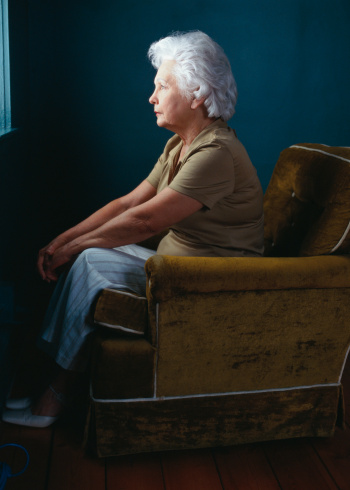 We’ve heard about the detrimental effects lack of exercise can have on our health. Not just tighter pants and low energy, but serious health risks. A 2012 study from the UK has estimated that lack of exercise in adults has contributed to the majority of cases of heart disease and colon cancer.
We’ve heard about the detrimental effects lack of exercise can have on our health. Not just tighter pants and low energy, but serious health risks. A 2012 study from the UK has estimated that lack of exercise in adults has contributed to the majority of cases of heart disease and colon cancer.
Clearly, the need to get active hasn’t hit home, and some of us are more at risk for health complications than others. In a new 2013 study, researchers from Massachusetts’ Harvard School of Public Health have found that elderly women spend up to 10 hours of their daytime sedentary. The lack of exercise is contributing to their health decline, and the study findings will see recommendations on how to get these women more active.
Advertisement
RELATED READING: Why Hip Joint Pains Is More Serious Than You Thought
The Effects Of Being Sedentary
In the UK, researchers on behalf of Lancet Physical Activity Series Working Group studied the consequences of lack of exercise in older adults. They concluded that inactivity results in more deaths than smoking. Other related health concerns were heart disease, high blood pressure, stroke, type 2 diabetes, breast and colon cancer, and depression. The study concluded that if individuals would partake in exercise, this would avert 533,000 deaths a year internationally. They also estimated that if every individual globally would engage in exercise, the life expectancy would rise 0.68 years.
What The Harvard Research Reveals
The recent research out of Harvard reveals that elderly women are at highest risk of health issues brought on by lack of exercise. These women spend about two-thirds of their day in a sedentary state. During the study, 7,247 women with an average age of 71, were examined as the focus group. These women were asked to wear a tracking device for seven days from the moment they awoke to when they went to sleep. Women were awake 14.8 hours per day, on average.
The older the women were and the higher their body mass index (BMI) was, the longer they remained sedentary. Higher BMI can be an indicator of obesity level.
The findings of the study pose one question, how do we improve the lives of the elderly? Get them moving.
RELATED READING: Improving Joint Pain And Mobility In Seniors With New Form Of Exercise
Get Moving And Improve Your Health
First and foremost, it’s important to understand that any form of exercise is helpful and can happen at any point in the day.
The Centers for Disease Control and Prevention’s (CDC) Healthy Aging Program reports that age should not slow us down, sidelining us from activity. Anyone, at any age, can become active. The program offers resources for medical professionals to help older patients become active. This program also assists in developing overall independence and well-being for the elderly.
Here, some tips you can take to get more active:
1. Stretch It Out
Even if you can’t run or go for walks, stretching is still very important. When you are inactive, your muscles can shorten and tighten. Stretching is a great way to gain back some flexibility and boost blood flow through your body. The CDC suggests yoga and using resistance bands as useful ways to stretch out the muscles.
2. Keep Your Weight In Check
As the Harvard researchers noted, a high BMI played a large factor in whether or not women were active or not. By maintaining a healthy weight, you can fight off weight-related illnesses.
3. Give Back
Some people are just not the exercise type, but activity is not based on weight or cardio. Volunteering your time can be the answer to keep not only your body, but your mind in top shape as well.
4. Slow And Steady
If you’ve been inactive for a while, rushing into fitness is not wise. Whatever method you choose, ensure you are starting off slow and ease your way into it. The CDC recommends at least two hours and 30 minutes a week of moderate activity. As little as 10 minutes a day is still enough to improve your health in the long run.
Advertisement
5. Have Fun
When you commit to increasing your activity level, make sure it’s something you enjoy! Whether it’s a sport or a hobby, genuine interest in it will ensure you’ll keep to it and thoroughly enjoy it. The CDC’s program lists everyday household work, such as gardening, is not only enjoyable but a great source of exercise.
Related Reading: Sitting at work deadlier than smoking!
